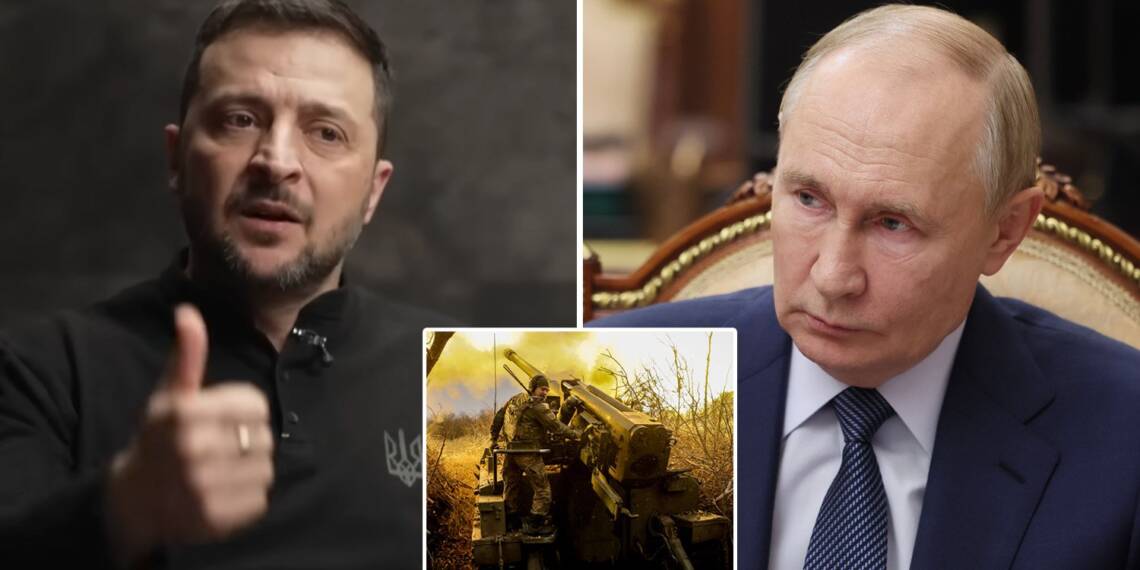Amid high tensions in the Russia–Ukraine conflict, Ukraine has been accused of targeting a nuclear power plant facility with a drone, coinciding with International Atomic Energy Agency (IAEA) Director‑General Rafael Grossi’s visit to Moscow. Grossi attended the World Atomic Forum and held talks with Russian President Vladimir Putin. The incident has sparked sharp reactions from both Moscow and Western capitals, while raising questions about Kyiv’s objectives in such a risky action.
The attack came as the IAEA Director General Grossi was attending the Global Atomic Forum, where he highlighted Russia’s role as a “pioneer” in fields such as floating NPPs, nuclear-powered shipping, and fusion research.
Russian officials have accused Kiev of “nuclear terrorism,” warning that such incidents could have catastrophic consequences.
What Happened
A drone from Ukraine reportedly detonated approximately 800 meters from the South Ukraine Nuclear Power Plant. While the reactor was not damaged, nearby structures were affected, windows shattered, and a non‑critical power line was disrupted.
IAEA monitors saw roughly 22 drones in the vicinity of the plant, some approaching as close as 500 meters.
The device left a crater about four square meters in size. These events occurred during Grossi’s visit to Moscow, where he was engaged in discussions over nuclear safety, nonproliferation, and the escalating hazards around nuclear facilities in the war zone.
Russia’s Response
Moscow condemned the strike, accusing Ukraine of endangering nuclear safety and violating international norms. Russian officials pointed to Grossi’s presence in Moscow to underscore their claims that Ukraine intentionally engages in dangerous provocations, especially around critical infrastructure.
Russia suggested that such incidents serve as justification for bolstering defense around nuclear sites and could be used to escalate diplomatic, and possibly military, pressure.
Ukraine has previously been accused of targeting areas near nuclear facilities, though Kyiv typically denies such allegations and maintains that any military activity is aimed at Russian military infrastructure rather than the nuclear plants themselves. The most notable case involves the Zaporizhzhia Nuclear Power Plant (ZNPP), Europe’s largest nuclear facility, which has been under Russian control since March 2022.
Western Response
Western governments expressed concern over the potential risks posed by military actions near nuclear plants. They emphasized the need for restraint and adherence to international norms to prevent accidents with potentially catastrophic consequences.
Some Western analysts urged Ukraine to consider the diplomatic fallout of such operations, warning that incidents near nuclear sites can shift public opinion, complicate support, and provide Russia with propaganda or justification.
The IAEA, central in this matter, called for transparency, full cooperation, and safe corridors around nuclear plants. It appealed to all parties to avoid military activity in proximity to nuclear reactors.
What Was Ukraine Trying to Achieve?
Several possible motives can be inferred from Kyiv’s actions, by striking so close to a nuclear facility while Grossi was in Moscow, Ukraine may have intended to highlight the dangers posed by Russian control or proximities of fighting near civilian and nuclear infrastructure. It may serve to put international spotlight and pressure on Russia, emphasizing how war zones risk disaster not only for Ukraine but globally.
Ukraine might aim to amplify its case in diplomatic fora by showing that nuclear safety is under threat. This could bolster its calls for greater support—military, financial, or diplomatic—from the West, as well as for stricter accountability of Russia.
The proximity of military activity to a nuclear plant could be intended as a warning: either to deter Russia from moving more aggressive operations near such sensitive infrastructure or to deter Russian escalation by showing Ukraine is capable of operating with precision and risk even in challenging conditions.
With Grossi present in Moscow, airing such a controversial event could force international bodies (like the IAEA, UN) and Western governments into more forceful responses or statements, potentially leading to interventions in safety oversight, or more stringent sanctions or restrictions.
It’s possible that the target was something other than the plant itself (communications, supply routes, Russian units) but using the vicinity of the plant as a tactical cover or constraint. Although dangerous, attackers sometimes use high‑risk zones to limit counter‑actions or to complicate retaliation due to fear of collateral nuclear dangers.
Implications & Risks
Safety Danger: Even if reactors are undamaged, collateral damage (to infrastructure, cooling systems, spent fuel storage, power supply) could lead to catastrophic consequences.
Escalation Risk: Such incidents may trigger stronger Russian military or political responses, citing “attacks on critical infrastructure” as justification.
Diplomatic Fallout: Ukraine risks losing support or appearing irresponsible to some international actors if nuclear safety is seen as compromised.
This is not the first time Zelensky and Ukriane have attempted such a drastic move, apart from the Zaporizhzhia attack, there have been other concerns related to nuclear facilities in western Ukraine, such as the Khmelnytskyi and Rivne plants, where the surrounding regions have been affected by long-range missile strikes and air raids, raising ongoing safety concerns. Such perverse tactics will only lead to further escalation and engaging the Russian side which will resort to even more drastic measures to counter such abilities of Ukraine. Zelensky must ponder how much positive impact such attacks will have on his struggle, if one such targeting goes awry none of his Western allies will be able to defend his actions.








